How Has Technology Affected the Art and Jobs of Set and Costume Designers?
As i of the biggest industries in the world, projected to rack up to $3.3 trillion by 2030, it'southward surprising to learn that the way fashion operates today hasn't changed that much in the by xx years.
This is, in part, because it's still easy to source low-toll manual labor in many countries and to outsource any pricey production costs. However, the ascent concerns about off-white wages, pollution, as well equally the need to satisfy the hyper-connected consumers of today, accept given way to new heady technologies.
Indeed, we live in the 'insta-historic period' of technology. Social media is changing how way is consumed and has trained customers to want instant admission to the latest trends, every bit soon as they hitting the catwalks. At the same time, younger generations, who desire to stand up out from the oversupply, seek products that tin be tailored to their needs and preferences. Moreover, 'mass-made' clothing or 'fast-fashion', seems to be gradually losing its appeal.
As this trend continues to rising, it makes less and less sense for companies and brands to go on producing large quantities of apparel, months in advance, with no certainty of how well it will sell. Those brands that pick up the pace and become more than responsive to market needs will be the probable winners in this fast-irresolute modern environment.
As customers' existent lives become increasingly intertwined with the digital globe, many designers and brands must embrace the latest technologies to push the limits of manufacturing, product, marketing, and wearability. From the latest in artificial intelligence to the blast of mobile commerce, 3D printing, and blockchain, we've rounded some of the height tech advancements beingness used in mode today.
Bogus intelligence
In recent years, brands accept been using AI to enhance customers' shopping experience, analyze data, boost sales, forecast trends and offer inventory-related guidance.
Chatbots and touchscreens are being used in stores to better customer experience and customized product suggestions. It's almost incommunicable to head to a fashion brand'southward website and non discover some form of AI chat technology that's being used to aid enhance the client experience. The technology behind AI includes algorithms that track customers' journeys to match them with the right products.
Although these customer service engineering tools are promising, trend forecasting and supply chain management are some of the virtually profitable avenues for AI. For instance, existent-fourth dimension inventory tracking has become key for brands as they salve time and make for efficient warehouse management and operations.
Furthermore, if nosotros combine inventory tracking with AI's powerful data prediction tools for tendency forecasting, brands could accept a pregnant competitive advantage. Instead of solely relying on traditional means of trend forecasting —which requires ascertainment and data collection from style designers, trend spotters, and influencers— brands tin can instantly take access to data that allows for planning the right styles and quantities in a timely fashion.
Accept, for case, FINERY. The British manner characterization has come up with an automatic wardrobe planning tool that, using analytics, records its female customers' purchases and introduces them in a virtual wardrobe. The platform likewise allows women to create looks from their wardrobe and fifty-fifty choose from over x,000 shops.
Meanwhile, the personalization platform TRUEFIT employs an online fit engine that helps users find an acceptable fit with brands and new styles on the market.
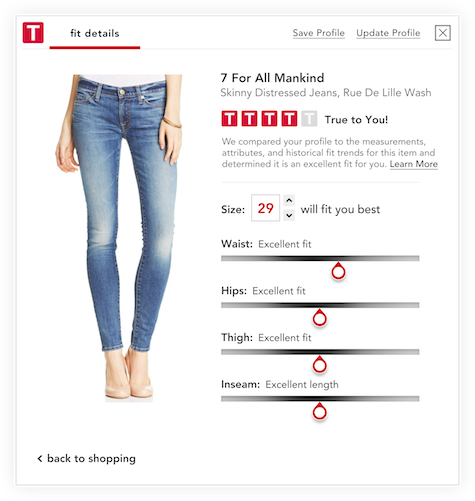
Other, smaller retail engineering companies are as well filling this gap for brands. Edited, a company based in London provides live data analytics software to give their retailer customers access to complete market data instantly. It has charmed brands like Boohoo, Tommy Hilfiger, and Marni and can synthesize the global market in seconds.
Some other interesting case is Intelligence Node, which allows users to track trends in real-fourth dimension. Customers tin enter specific keywords, user navigation patterns, price points, and more than. Intelligence Node AI-driven search discovery platform lets users track the exact or closest matches to your production, which can provide invaluable insights nigh competitive differentiators.

Streaming alive videos has go a huge part of our lives. From virtual events to fitness, Instagram shopping has taken over 2022's post-COVID market. 5G allows new streaming media formats with high-definition graphics. Now, customers tin "endeavour on designs" earlier making their purchases. Some brands, such as Tommy Hilfiger and Gucci, are offering digital showrooms to gauge the market's appetite. Some, like Taylor Stitch, allow customers to pre-lodge digital designs before they become into production. As well, many online-just eyewear companies such as Firmoo and Glasses Direct are too offer a digital 'try-before-you-buy' service that lets consumers visualize the frames on their faces before committing.
Historically, fashion trend forecasting solely relied on prior trends to predict the future. New technologies like Heuritech define audition panels on social media. To predict time to come trends, it applies image recognition technology to social media pictures to admission shapes, prints, colors, and attributes to fabrics.
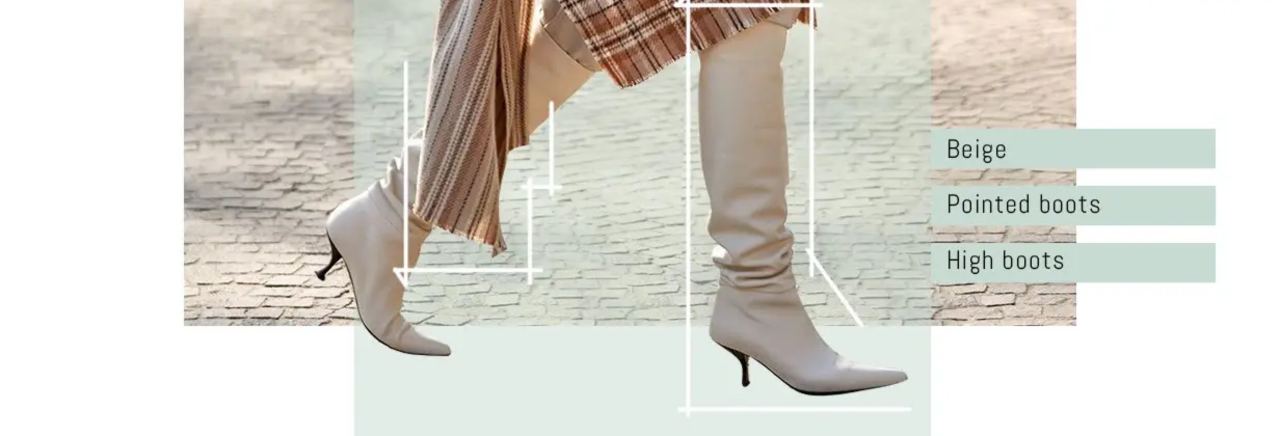
Google also deployed a similar experiment, in partnership with German fashion brand Zalando. The neural network was trained to understand style preferences, colors, and textures. Subsequently that, the algorithm was used to create designs based on users' styles preferences. In that location is besides the collaborative project between IBM and the Manner Found of Technology, known as "Reimagine Retail", which uses the high-tech IBM AI tools to bespeak real-time fashion manufacture trends, themes in trending shapes, colors, and styles.
These technologies highlight how AI is the bastion of future developments in the fashion manufacture, shaping everything from trend forecasting to how consumers may actually see and buy products.
5 Meridian Trends In Fashion Manufacturing Applied science
Check out these 5 major trends reshaping the time to come of wearing apparel manufacturing.

Novel fabrics
Novel fabrics are arguably the future of fashion, every bit another manner in which designers can set themselves apart and appeal as a sustainable pick.
All the facts point to the idea that eco-leather is not a very sustainable option. Startups similar Modern Meadow are combating this by creating lab-grown leather without harming animals. Also, companies like Commodities Threads and EntoGenetics are innovating super-strong spider silk.

The latest interactions in printed objects that change colors include a organisation created past MIT researchers chosen ColorFab 3D. This technology prints 3D objects with "photochromic inks" that change colour when exposed to certain wavelengths of UV light. One of their first items produced was the band that can be programmed into a number of customizable colors.
Google fans may soon exist able to wear clothing made by the digital tech giant. Project Jacquard, out of Google's ATAP lab (Avant-garde Engineering and Projects), is a drove of conductive threads for weaving touch-responsive textiles like clothing, tablecloths, rugs, or anything else fabricated of material.
The squad behind Project Jacquard is as well making color-shifting possible with Ebb. Information technology is a colour-changing fabric technology that could anytime be programmed to change our mood or setting. The Ebb materials could even assistance us conduct many activities that nosotros currently do on our phones using the colour signals instead. For example, when you lot receive an incoming call the color of your cuff changes.
This highlights how novel fabrics will be literally reshaping the garments we article of clothing each day. Look out for novel fabrics popping upwards in boutiques across the globe, every bit there seems to be no slowing down in this technological trend.
Net of things (IoT)
The IoT describes a network of objects - the 'things' - that are embedded with technology to permit the exchange and connection of data over the internet. This is one of the most heady, emerging technological trends in the fashion market. Year on yr, everyday fashion continues to improve to reflect the realities of our daily lives. From a great emphasis on comfort to using new and exciting fabrics, the style manufacture has had to go on up the pace in adapting to the demands of contemporary life. This has been seen most clearly in the exciting advancements in clothes technology and wearable gadgets. These have gone every bit far as affecting how nosotros experience our surroundings, interact with others and our bodies, giving the word comfort a whole new meaning.
Smart clothing, wear spaces, multi-functional designs, and responsive sportswear have all massively developed over the by iii years. As our "existent" lives become increasingly mixed with a virtual beingness, many designers have been experimenting and pushing the limits of what wearability ways.
The rapid expansion of applied science has impacted businesses in many means. The Cyberspace of Things (IoT) enables data sharing, inventory management, security, and increased efficiency and productivity. Many businesses consider IoT in improving their client experience, by allowing customers to literally accept the cyberspace and information sharing with them 24-hour interval-to-day.
This includes clothes with digital capabilities, like smart vesture, wearable spaces, multi-functional designs, responsive sportswear, and more. Starting with the humble smart scout, dominated by brands like FitBit and Apple tree, wearable technology dominates the manner accessories marketplace.
However, new developments that are trying to fill the gaps inside this health-driven market are also emerging this year. For example, NADI X, yoga pants that have built-in sensors to correct the users' posture by vibrating every bit they move through yoga poses.
Some of the most exciting IoT innovations are related to health. Hexoskin, for case, tracks your heart rate and temperature. They too manufacture socks that count steps, calories, and other data.
Meanwhile, Fuseprojects' power suits help the elderly suffering from musculus dystrophia to walk, stand and stay active for longer periods of fourth dimension. All of this information will come in handy for doctors and wellness providers to help their patients.
Another interesting instance of the cyberspace of things being incorporated in apparel is LOOMIA. The San Francisco-based textile company creates soft flexible circuits that can be embedded into textiles for heating, lighting, sensing, or data-tracking applications.
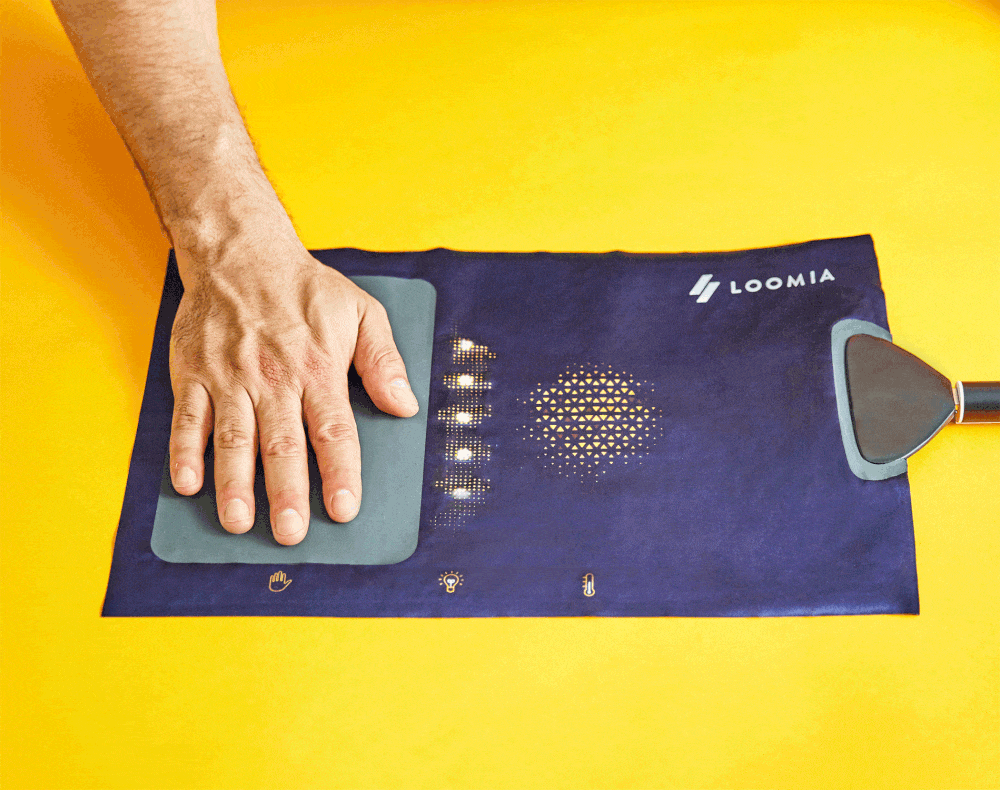
Liking what you read? Subscribe to our newsletters
Rapid Data Analysis For Quick Adaptation
Rapid data analysis, for quick adaptation, is a way for businesses to quickly adapt their business concern fragments (such equally the supply chain) quickly and efficiently through using large amounts of data to support this adaption. Thanks to the new software tools available on the marketplace, brands, and factories can receive existent-time feedback and alerts from companies almost defects or damaged goods. This helps them relieve money, eliminate waste and deliver acceptable products at the correct fourth dimension. Information technology as well lets them maximize customer satisfaction by recognizing potential business organisation threats instantly.
One example is management software like IQMS. The enterprise resources planning (ERP) software is used in manufacturing for monitoring and collecting the production information in real-fourth dimension, as products are being made.
There are also other types of software worth looking at that operate in a dissimilar manner. For case, the rise of cloud computing has opened new avenues for collaborative work, allowing factories and companies to work together from many parts of the world at the same time. This enables them to access relevant data, making for a faster and more than effective style of communicating. The value of deject-based supply-chain management solutions will surpass $11B by 2023 emphasizing how important this switch to rapid-data management is.
In the case of optimizing advice and production with factories, Techpacker helps streamline and automate this entire process. Its cloud-based software allows everyone in design teams and factories to learn nigh changes in tech packs in real-time. This eliminates the entire manual procedure and the constant emailing, making tech pack creation seventy% faster than traditional methods. This has been shown through the new Illustrator Plug-In, which imports designs via cloud-based software in second. This is cardinal in promoting PLM techniques that manage a business concern sustainably, across numerous distribution channels. The Techpacker app enables manner teams and their manufacturers to manage product evolution in real-time.
This highlights how rapid information analysis can help companies adapt quickly when needed. As shown during COVID-nineteen, the need to adapt and overcome has been paramount for brands to survive. Thus, using a rapid data tool like Techpacker, tin help ameliorate team collaborations and optimize production development and production lifecycle through only i intuitive software choice.
Mobile commerce
Mobile technology is getting more advanced every mean solar day. From Insta shopping to smart wallets, mobile commerce is the ultimate tech tool. It has non just impacted our everyday lives, merely it has become one of the fastest-growing sectors in eCommerce.
This is because using our smartphones for shopping online is becoming easier and easier. With digital wallet options like Apple and Android Pay, constantly innovating with new technologies like fingerprint and facial recognition, they're poised to get the preferred payment for retail purchases. In fact, co-ordinate to BigCommerce, two out of 3 millennials would rather store online than in-store.
If, on superlative of eastward-commerce growth, nosotros throw social media into the mix, (similar Instagram's shopping feature brands can be present in their customers' favorite channels with a fully integrated digital commerce offering. This gives them greater visibility and provides them with more opportunities to make a sale.
Likewise, sustainable fashion apps like Vinted and Depop take taken the market by storm, replacing traditional avenues like eBay and Gumtree for selling second-hand style. These mobile sales sites have revolutionized the online sales manufacture, demonstrating how mobile commerce is innovating every attribute of the fashion industry.
Virtual and augmented reality (VR)
Combining the physical and online worlds of retail has been one of Virtual Reality's most exciting applications. This is certainly truthful in the fashion industry: one widespread use of VR is enabling customers to almost endeavor on outfits. This gives greater accurateness, thanks to customized measurement functionality, and besides employs augmented reality technology. Information technology likewise means that customers might exist more likely to buy products they feel that they're tried on.
This kind of online shopping experience engages and retains the customers longer, as they beloved seeing the production on themselves before buying. This, combined with the social media share gene, makes it even more highly-seasoned to customers.
Some companies are making the most of AR and VR engineering science:
Obsess is a platform that allows brands and retailers to create and serve 3D, 360-caste shopping experiences on their websites, mobile apps, and social channels via a 3D Commerce Cloud.
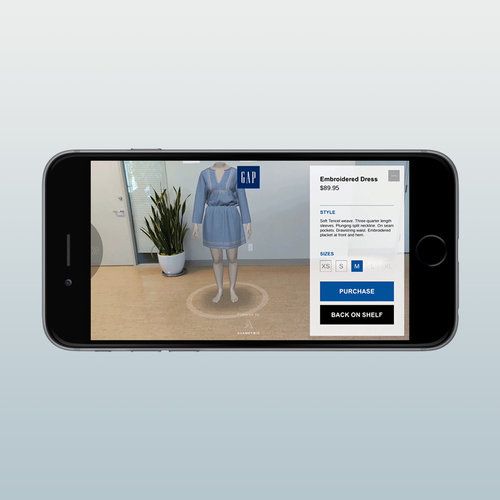
VIRTUSIZE likewise enables online manner retailers to nearly illustrate the size of their products, to find the accurate fit for the garments their customers choose.
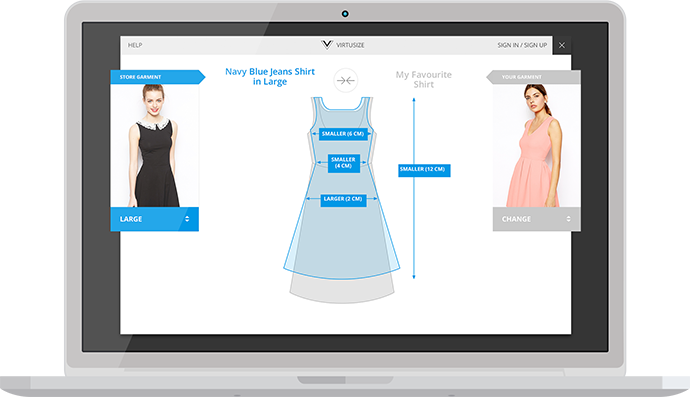
Another prime user of AR/VR technology is EFI Optitex which has profoundly improved the expensive and lengthy process of finding an acceptable fit. They've shown how to take the essential components of a pattern, like apartment sketches and technical patterns, which can and so exist morphed into simulated 3D renderings. This then allows users to chop-chop adjust for cutting, loosening the fit, and making all the necessary adjustments in existent-time.
Other new 3D rendering technologies include CLO. The tool allows brands to edit designs at the moment and instantly review changes. This can help improve the quality of designs past checking the silhouette and fit sooner in the development procedure. This way minimizes waste product and reduces mistake in the sample before finalization.
Selling digital clothing is getting more than pop too. For example, Louis Vuitton designed "skins" for League of Legends characters and Drest sold digitized versions of Farfetch inventory. Ralph Lauren's recent collaboration with Bitmoji, where customers can create their own Bitmoji look with the new mix-and-match wardrobe from Polo Ralph Lauren, as well demonstrates the irresistible power of the e-wardrobe.
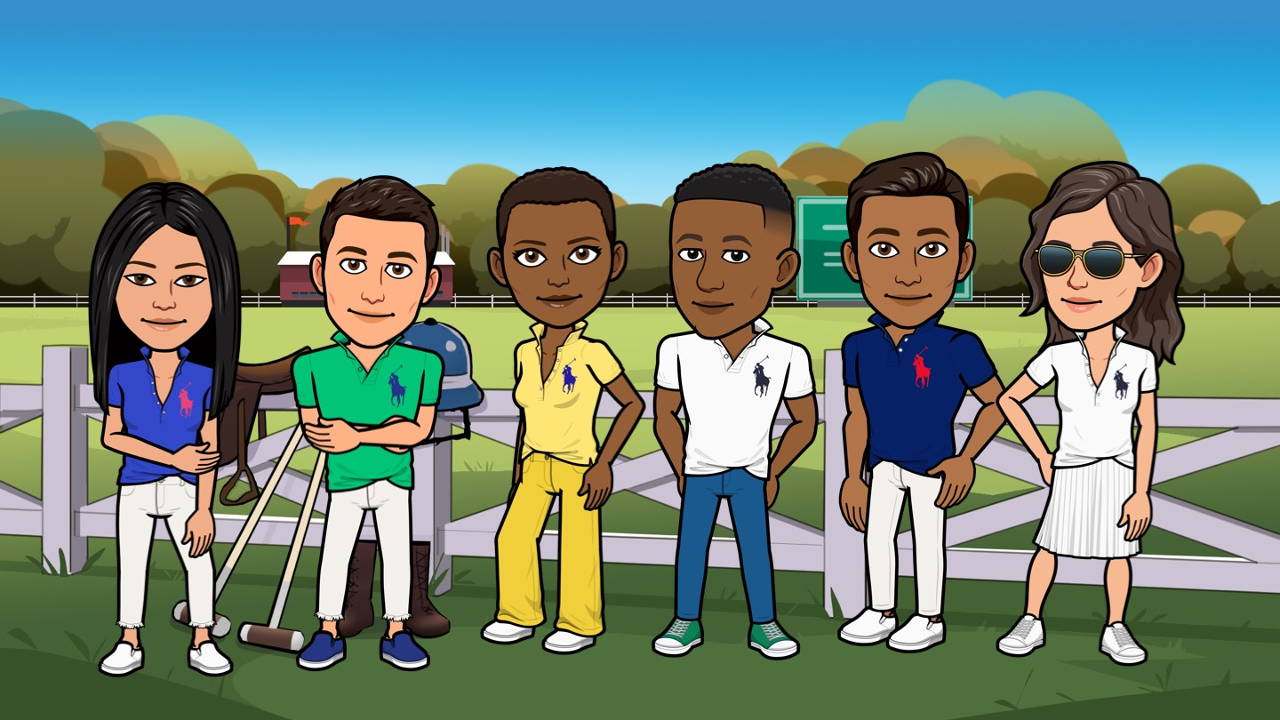
Online vector editors
New Adobe Illustrator alternatives are gaining popularity. These are peachy choices if y'all're new to designing using graphics design software. Or if yous don't have admission to Illustrator or Sketch, and all you need to do is elementary vector-graphics editing.
There are online vector editors like Vectr, Boxy SVG Editor, and Repsketch that can exist accessed from anywhere on any machine.
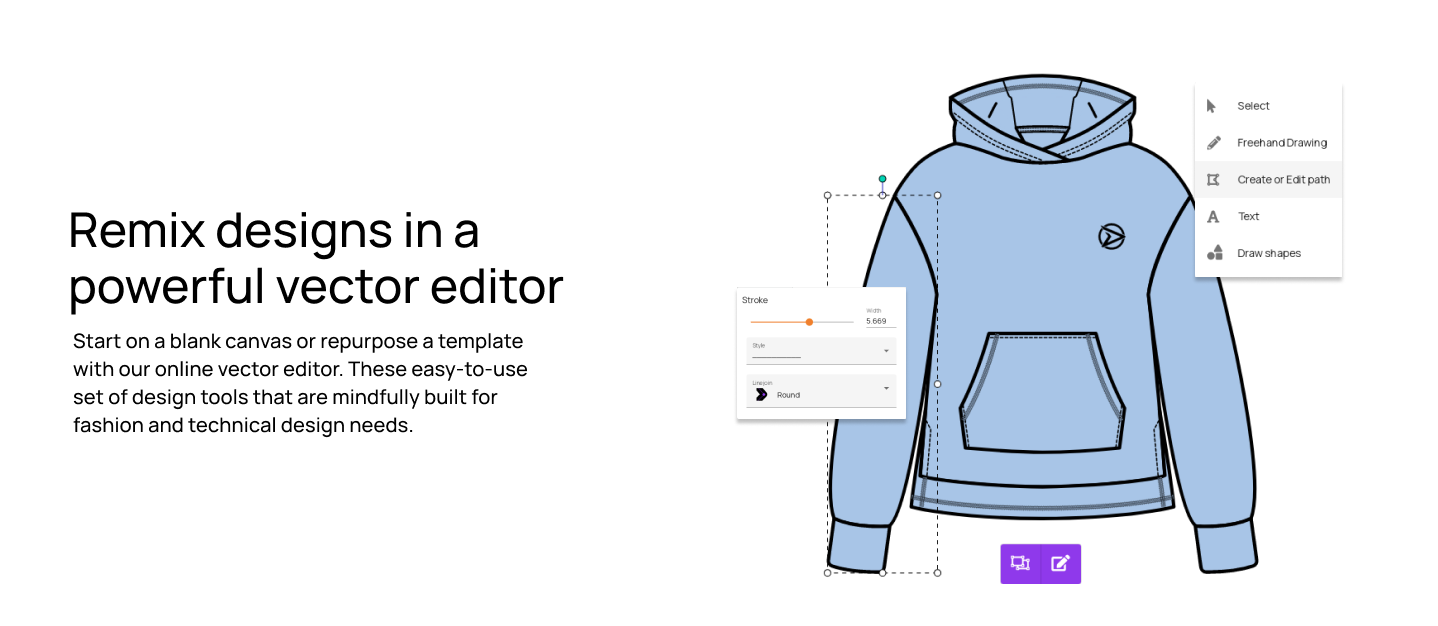
Some of the online vector editors include pre-congenital templates created by graphic or fashion designers. Repsketch provides a variety of clothing templates to choose from. Including design details similar different types of collars, sleeves, and pockets. This powerful vector editor allows you to create new dress designs fast, without having to sketch them from scratch.
Online vector editors allow you to download, embed or merely share a public link of your designs with the world in web-friendly SVG format.
3D Press
Since the advent of 3D printers, many brands, both big and small, have been looking into the possibilities it holds for on-demand production. This will create new avenues for customization, sustainability, and inventiveness.
Many fashion brands are embracing 3D in their collections in 2022, from accessories to total looks.
Despite the fact information technology takes many hours to create, information technology results in less waste and proves far less labor-intensive than other types of manufacturing. Indeed, printing garments on-need reduces fabric waste past most 35%. This minimal waste approach could provide valuable insights on how to reshape the electric current state of factories and align them with a more sustainable social and ecology focus.
Allow's not forget one of the pioneers of 3D printing in high fashion: Iris Van Herpen. The Dutch designer has a vast torso of work in the 3D printing field, dating all the way dorsum to 2010. Ane of her most notable pieces is the "Crystallization" top, which was 3D printed from white polyamide.
Van Herpen is perhaps the only designer to show at the prestigious Haute Couture fashion weeks in Paris employing sophisticated technologies for her garments and presentations. Some of her clients include Bjork, Beyonce, and Lady Gaga for whom she has produced special 3D printed fashion pieces.
3D printing besides takes style to a new level of conceptual art. Anouk Wipprecht'south incredible Spider Wearing apparel has mechanical arms which shift depending on the closeness of other people. This 3D printed dress combines the cutting-edge scientific technology which haute couture mode, demonstrating the versatility of this new technology.
Digital knitting has also been making great strides in the 3D press world, and it offers a myriad of customization possibilities. For instance, manufacturers similar Shima Seiki can plow cones of yarn into a full, seamless garment in less than an 60 minutes.
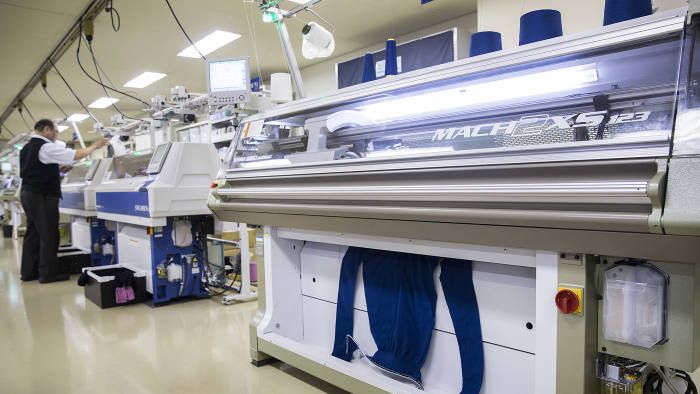
Blockchain
Blockchain is a great tool for transparency, traceability, and efficiency in the supply chain. It allows all of its members, from carriers and banks to intermediaries and suppliers, to be connected and substitution information, documents and data, directly and deeply.
But what is blockchain and how does it work?
Blockchain is generally used as a tape-keeping technology behind bitcoin and digital currency. "Blocks" on the blockchain are made upward of digital pieces of information that shop information about transactions like the engagement, time, and dollar amount of your near recent purchase, besides as who is participating in the transactions. However, they as well shop information that distinguishes them from other blocks, using a unique code called a hash. (More about blockchain from Investopedia.)
This tin be used to efficiently trace and keep records of clothing wearing apparel and supply bondage through engineering science like track-and-trace and inventory management.
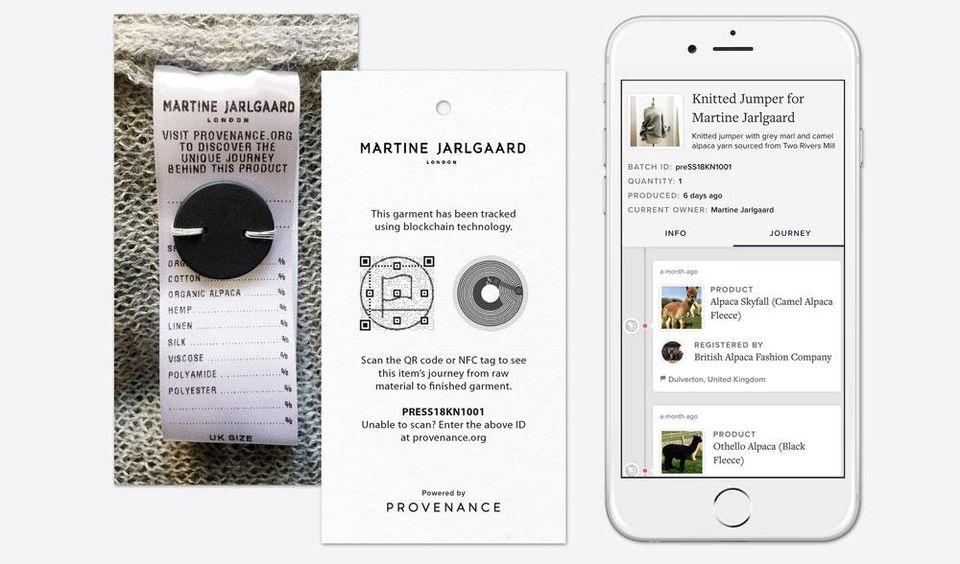
The blockchain solution creates a physical-digital link betwixt products and their digital identities on a blockchain. Only similar with digital currency, Blockchain offers a cryptographic seal or series number that acts as the physical identifier which is linked back to the individual product's "digital twin", equally explained past Forbes magazine.
This technology has been taken advantage of by TextileGenesis, which uses the technology to go on a record of every stage of production. They say this will help to keep their supply chain more transparent, equally well every bit encourage a wider button towards sustainability.
Each time a product moves in the supply chain it's recorded on the blockchain. This can prevent counterfeiting as goods that are missing the physical-digital link will exist obvious fakes. Likewise, any attempt to divert appurtenances can be tracked. This identifies if the last political party to gain custody of the product, had a apocryphal product slipped in—or if the authentic production was diverted out.
Sustainability
In the by fashion has e'er followed the traditional seasonal format. Designers released spring/summer and fall/winter lines, as well every bit pre-fall and pre-spring runways. Lately, as the reality of the climate emergency sets in, nosotros've seen designers motion abroad from seasonal collections in favor of designing timeless pieces that can serve consumers for years.
Does this hateful that nosotros are seeing the end of seasonality in fashion?
In fast fashion, designs move chop-chop from runway to shop shelves. Fast way giants tin produce as many equally 52 micro collections per year. To keep up with the rapid consumer need traditional brands had to keep up and release upward to 11 collections per year.
As rapid production runs create excessive textile waste product, lots of apparel ends in landfills and harms both factory workers and the environs. Effectually 12.8M tons of clothing are sent to landfills annually. The fashion industry is responsible for up to 10% of global CO2 emissions, twenty% of the world's industrial wastewater, 24% of insecticides, and 11% of pesticides used.
Due to this environmental bear on, more consumers and mode brands are turning to the concept of "slow fashion" and away from the long and plush manufacturing process. As a issue, more brands are opting for sustainable production and more consumers are choosing conscious brands over fast fashion.
According to the fashion search engine Lyst, there is a 47% increase in shoppers looking for upstanding and sustainable products.
Some other sustainable practice that is getting even more popular now is ownership secondhand clothing through consignment and austerity stores. I of the largest online thrift stores, ThredUp, predicts that the total secondhand apparel marketplace will hit $51B past 2023. Vesture site Re-Style has adult the perfect cyclical structure for sustainable mode. They sell second-hand designer article of clothing at excellent prices, whilst also accepting donations for free. The site has cornered an in-demand market past offering both sustainable buying and donation options that consumers dearest. It'south also a completely digital platform, pushing the sustainable message through their online market.
Likewise, many emerging brands are making moves to align with this shift in consumer beliefs. Brands like Cuyana are urging their customers to buy "fewer, better things. Minnesota-based brand Hackwith Blueprint House are making their clothing out of deadstock fabrics.
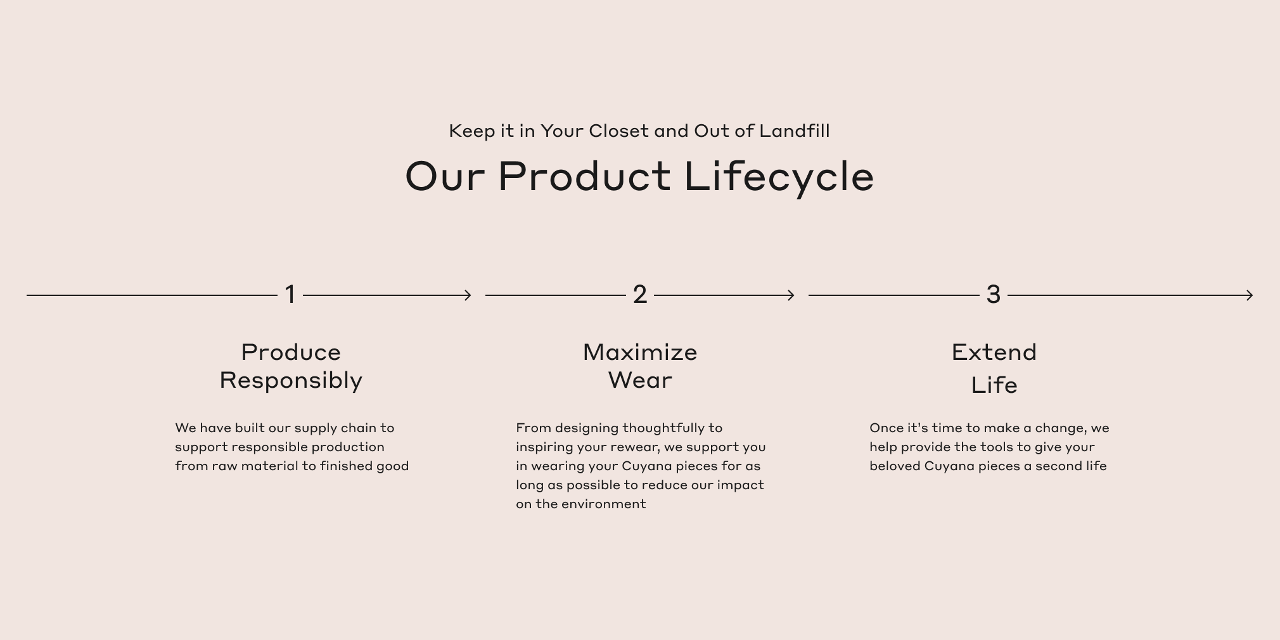
This demonstrates how sustainability is pushing business decisions, likewise as reshaping the online market. Arguably, thrifting has at present gone digital as sustainability is now the order of the solar day for most brands and designers.
Also read -
Top 10 Style-Tech Innovations
From artificial intelligence to zero waste productions, here's our circular-up on major tech advancements in fashion.

Source: https://techpacker.com/blog/design/top-9-fashion-technology-trends/

0 Response to "How Has Technology Affected the Art and Jobs of Set and Costume Designers?"
Post a Comment